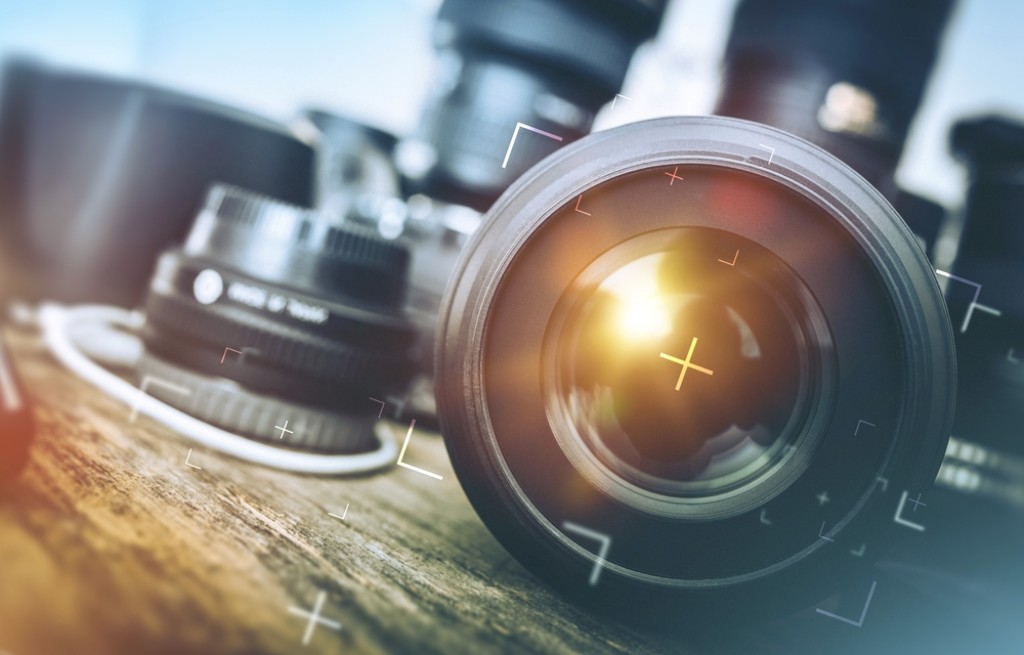Originally posted on December 15, 2022 @ 1:05 pm
Photography has given the world a vast array of magnificent works of art in just under 200 years.
The most significant disappointments as well as the most profound hopes can be captured through photography. The historical background of photography encompasses a wide range of categories, subjects, and issues, ranging from a simple, crude genuinely designed to report a second to the psyche-bowling results of new specialized wizardry.
The well-known photographers who created some of the most famous images in history usually practiced their craft while being cautiously devoted to humanity, nature, and the creative process. Their standards continue to shape the creative photography industry today.
The 11 most well-known photographers in history are listed below, followed by accolades in the categories of scene, natural life, representation, road, and dreamlike photography. These experts have created masterpieces that inspire, move, and engage in their own amazing ways. Continue reading to learn more about their efforts and the inspirations behind them.
1. Dorothea Lange
For her dedication to civil rights and belief in the power of photography, Dorothea stands out among well-known photographers. As a picture photographer in her first job, she made enough money to cover the rent. Her subjects were primarily wealthy socialites and elite money managers of the time. However, when the Great Depression began, she began to make use of her capacity to document the human suffering of the time.
For her work with the Farm Security Administration and Resettlement Administration, Dorothea is widely recognised in general. She spent a lot of time reporting on American neediness and double dealing with her then fiancé, Paul Schuster Taylor. Her work depicting the conditions of tenant farmers and temporary workers helped to increase public awareness and spur government action. The report that motivated the federal government to aid a camp of malnourished migrant workers used Lange’s ostensibly most famous photograph, “Traveler Mother.”
2. Pictures Taken By Dorothea
Images Captured by Dorothea: In 2006, the American government sent Lange images of Japanese internment camps, restoring her legacy. Lange’s record of the camps, which was initially filmed in 1942 on assignment from the War Relocation Authority, was hidden from the public during her lifetime.
In her essay “Shooting the Familiar,” Lange examined photographers who made a living by capturing the “marvellous.” She acknowledged that intimacy and familiarity were necessary for photography, and that it was the responsibility of photographers to capture this current world and its inhabitants.
She is still one of the most influential photojournalists and artists in America. Her writing inspires documentarians, and her photography is used all over the world to help depict the suffering that ordinary Americans experienced in the 1930s and 1940s.
Famous photographer Cindy Sherman’s “Untitled Film Stills” series from the 1970s outlined her early career in photography. The show is a unique exercise in media analysis, self-representation, and ambiguous storylines. In the manner of Italian and American noir movies from the 1940s to the 1960s, Sherman performed and shot herself.
Sherman’s skill in compiling images that suggest future narratives, both explicitly and narratively, is what distinguishes the “Untitled Film Stills” series from other collections and what initially won her basic acclaim. Despite the fact that she presents in the manner of movie characters, her demeanors are a blend of sincerity and purpose — like an atypical film’s cover.
Numerous times, “Untitled Film Stills” are evaluated in relation to general communications analysis. Sherman looked at a variety of angles when it came to fusing and combining various social representations and codes, such as orientation and class, fabulosity, and deformity. Her work is a blend of humour and sincerity, which has helped to inspire a new generation of photographers and craftsmanship experts to develop deep, in-depth understandings of her field.
Sherman adapted various broad communications in her later work, such as design shoots and delicate centre pin-ups. She remained committed to the psychological aspects of her photography, as seen by her statement in a magazine interview that “While I’m working, I could feel as tortured as the person I’m portraying.”
The innovative character and depiction studies of well-known photographers like Sherman continue to influence media professionals all across the world. 2011 saw one of her photographs break the record for the most expensive image ever sold.
3. Ansel Adams
When it comes to scene photography, Ansel Adams is America’s most well-known photographer. His work, which spans the 1920s through the 1950s, is most known for its strikingly contrasting images of the American West.
Ansel Adams is renowned for his remarkable clarity in his photography, which was practically impossible to achieve given the cutting-edge frontiers of his era. He promoted a specialised approach to filmmaking that conveyed the full apparent potential of film innovation at the time.
Ansel has the ability to produce stunning images of American nature thanks to his specific dominance and propensity for vivid outlining. At that time, creative craftsmen attacked well-known scenario compositions for lacking imagination and flair. He took this analysis seriously and developed his argument to show that everyday wonders can be just as startling as any theoretical piece of art.
Ansel is regarded as a key player in the rise of the American hippy. He completed a large portion of his first work for the Sierra Club, an American hippie organisation that dates all the way back to 1892. He also recorded National Parks for the American government. In 1980, he received the Presidential Medal of Freedom in recognition of his contributions and genuine photographs.
Given his talent with high contrast apparent ranges, Ansel’s specific specialty is still focused on today. The Ansel Adams Gallery has online exhibits of his art.
4. Peter Lindbergh
Peter Lindbergh’s dedication to shoddy, unedited photography distinguishes him from other photographers. The German photographer worked from the 1980s to the 2010s, and unlike the majority of well-known photographers, he never bothered to painstakingly improve his images. He even went so far as to demand that magazines sign a contract guaranteeing that his images wouldn’t be altered in any way.
He acknowledged that the purpose of photographing people was to capture their humanity and “liberate them from the terror of youth and flawlessness.”
It might come as a shock to someone who has a strong commitment to the truth in photography to learn that Lindbergh is generally credited for popularising the supermodel era.
He photographed Cindy Crawford, Linda Evangelista, and a few other now-famous models in 1989, but none of them were well-known at the time. The fashion community was taken aback when a shot of the models in stark contrast appeared on the cover of British Vogue.
Lindbergh wanted to photograph the models as real people rather than as mould icons, therefore he decided to shoot in a very different way. Later in life, he made the observation that high contrast photography reduced the corporate atmosphere of photo shoots and allowed people to “see who they truly are.”
The fact that the images in the current magazines have been radically altered is a widely accepted belief. The training occasionally tries to create the ideal model by combining various body parts from diverse people.
Obviously, this type of photography is becoming more and more common in a time when everyone with a cell phone can quickly access channels and final information.
Up to this point, all of Linderbergh’s images have been exact replicas of what his camera captured. His dedication to the field and his subjects is a powerful illustration of the beauty and power of everyday photography.
“How bizarre is the contemporary business plan to correct all signals of something going on under the surface and of involvement, to distort the incredibly private reality of the genuine face?” asked Linderbergh in a 2016 meeting with Artforum.
You can look through some of Lindbergh’s photos here.
5. Fellow Bourdin
French photographer Guy Bourdin is a well-known commercial photographer who is credited with introducing the mainstream design world to a particularly saturated and surreal style of photography in the 1950s with his images for Vogue.
The Surrealist movement that was taking hold in Bourdin’s native France gave life to his art. He focused on studying under renowned surrealist Man Ray and actively drew from the shows of the advancement.
His images feature vibrant, stunning variety, surrealist structuring, and vivacious sexuality. His images are currently displayed in all twelve of the exhibition halls.
Bourdin’s relationship with his job was complicated. Despite the fact that he initially sought out the guidance of skilled craftsmen, he discounted the idea that his work should be showcased at exhibitions.
In 1985, he declined one of the most prestigious photographic grants, the Grand Prix National de la Photographie. Toward the end of his life, he believed that his art was not something that should be seen to anyone. He acknowledged his need for it.
The assumption that the subject was typically not as significant as the overall attraction of the picture was always changed by Bourdin’s capacity to create pictures with clandestine, provocative stories. His test photography continues to be the best among designers who want to push the boundaries of corporate photography.
6. Mary Ellen Mark
Mary Ellen Mark became one of the most esteemed road photography artists of the late 20th century as a result of her talent for composition and curiosity in peripheral lives and communities.
Since the subject of the shot has very little, if any, opportunity to offer, road photography is challenging. The photographer is forced to capture the image quickly. Imprint’s talent rests in her ability to make this moment into something extraordinary. With her discreet equipment, available light, and success in capturing sincere moments, she established a new standard for travel photography.
In the 1960s and 1970s, Imprint recorded American nonconformities and destroyed networks, honing its style. She took pictures of prostitutes and those who were addicted to illegal drugs. “What I feel that should accomplish more than anything is recognise their truth,” she is quoted as stating in Salon.
Mark was a perfect candidate for recording film sets because he performed brilliantly with minimal hardware.
In addition to her road photography, her candid shots of well-known leaders, like Federico Fellini, have long been featured in film history books. Additionally, Mark produced a sizable amount of image work for renowned brands and publications.
On the internet, her work is accessible at maryellenmark.com.
7. Henri Cartier-Bresson
Mary Ellen Mark may be the most famous American travel photographer, but in the middle of the 20th century, the French photographer Henri Cartier-Bresson led the development of the sophisticated art of real photography.
The goal of Cartier-photography Bresson’s is to capture the “unequivocal second,” as he describes it. While filming, he was committed to remaining anonymous, even going so far as to paint his camera matte black to counteract the distinctiveness of its shining silver finish.
He had to prevent his subjects from making any sort of presentation or trickery. In this vein, he frequently fired quickly and covertly, hoping to seize the “unequivocal second” before the subjects realised.
Although Cartier-images Bresson’s are artistically inspiring, they also serve as photojournalism. His early and mid-century images from all around Europe serve as a documentation of daily life at the time.
Henri Cartier-Bresson is widely credited with remarking, “I out of the blue recognised that a shot could fix endlessness in an instant,” at the moment he saw it created by Hungarian reporter Martin Munkacsi. In fact, Cartier-work Bresson’s is an arrangement of such events, with great profundity and attractiveness.
8. David LaChapelle
David LaChapelle is a rebellious and eccentric photographer whose work is frequently bright, dynamic, and undeniably alluring. His reputation for balancing pop tastes with a respectable grasp for the planning and presentation of expressive arts is well-known.
At the age of 17, LaChapelle started his career ahead of schedule when Andy Warhol asked him to work for Interview magazine. His art has since appeared in periodicals all across the world.
LaChapelle frequently incorporates subtle comedy and satire into his photographs, as shown when he isolates cheery characters from depressing settings.
While commercial, VIP, and style photography have distinguished the peaks of his vocation, now he has left the matrix and gone back to exhibition craftsmanship. In his later work, he looks into topics like industrialism and reclamation.
9. Sebastio Salgado
Sebastio Salgado is one of Brazil’s precious assets. He has been to more than 100 different countries, won 19 outstanding photography grants, and is appreciated by generations of artisans for his social story work.
Salgado developed his expertise in photography while working for the World Bank in Africa, and he later found work as a financial specialist elsewhere. He started out as a photojournalist before concentrating on wide-ranging photographic genres.
Reporting on neediness takes up a significant portion of his work. He captures the poise of even the most damaged subjects while using a straightforward photographic approach to avoid theatrics.
(In keeping with this, his photographs have the renowned attraction of portraying people and their circumstances in a way that communicates a dreary truth.
Salgado’s published books highlight the most of his body of work. He makes an effort to set up each photograph in a series so that they all have rich backgrounds.
Saldago’s use of distinctive high contrast photography, which emphasises soil, grain, and defects, makes his images instantly recognisable. His subjects are therefore captured in close-up so that the uniqueness and humanity that successfully emanates from them through their situations can be seen.
Salgado’s extensive body of work has gained admirers and presidents from all over the world, and young photographers are drawn to and inspired by his social commentary.




